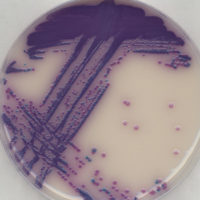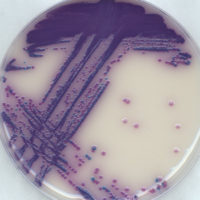In 2006, the U.S. Centers for Disease Control and Prevention’s (CDC) FoodNet surveillance system reported that 39% of documented foodborne illness cases were caused by Salmonella. Despite more regulation governing testing and control of Salmonella in the food processing environment, it remains a very real threat to the safety of consumer products. Industry is continually developing its understanding of the nature, characteristics and control of this organism at plant level. However, the unique nature of each of the thousands of specific sample matrices, coupled with the known adaptability of microbial organisms will prevent this organism from ever being eliminated from the food chain. Testing and inspection will need to constantly improve to assure consumer safety.
From a screening perspective, food safety managers continue to seek “the perfect test” to easily, rapidly and accurately determine if the organism is present in food samples. This can be problematic because Salmonella is a complicated organism, with more than 2,400 species in circulation and a lot of closely related cross-reactive bacteria related cross-reactive bacteria that could cause false positive results, which can make choosing the appropriate method a nightmare. In food matrices where initial background flora is high, competing microorganisms may outgrow the contaminating Salmonella during the enrichment process leading to a false negative result.
In the past, diagnostic approaches to alleviate these issues have been solely related to improvement of the specificity of the assay; few, if any, advances have targeted the selectivity/productivity of the media. Optimizing both ends of a method is key to developing the best test for Salmonella. There are challenges to this, including the large number of matrices required by law to be tested for Salmonella—from poultry drag swabs to dairy chocolate—which throws a significant variable in the testing arena; namely, the “one size fits all” principle frequently does not apply. Testing protocols are often tailored to the matrix in question, which means that multiple standard operating procedures, validations and verifications are required to get a method incorporated into a food company’s Hazard Analysis and Critical Control Points (HACCP) program.
Fast, easy and accurate results are noted among the top five criteria upon which customers make their pathogen detection method decisions, but in an age of increased budget constraints and doing more with less, they face another challenge: the cost of running the test has become an increasingly important factor for many operations in the food industry.
Top 4 Features for Selecting a Salmonella Method
To meet the technical and economic challenges of Salmonella testing, food safety and laboratory managers need to consider four key features of any diagnostic method or automated detection system:
1. Results. Any detection system for Salmonella and other pathogens must ensure that assays are sensitive, specific and reproducible. It is important that the method has low levels of false positives and negatives. High false positive rates can cause incremental confirmation costs, not to mention the cost of holding product prior to the test result. Since an end user will never confirm a negative result, the danger of letting tainted product into the food chain becomes a reality if a system has a high false negative rate, threatening product recalls and brand damage.
2. Costs. Test method users must have an understanding of the method’s “true” costs by recognizing that the price of test materials is the least cost associated with pathogen testing. Greater costs include: time to actionable results, analyst time; lab/ facility requirements; impact on plant CIP and hold/release programs; and disposal costs.
3. Ease of use. In the age of supply and demand, staff turnover can be an issue. Continual training of new staff on the technical complexity of a method is not only exhausting but a drain on company resources. Having a method that is highly accurate and easy to use cuts down on the number of potential errors during transfers/preparation.
4. Time to actionable result. Users must choose assays that will give results in a timely fashion. Convenience of rapid methods have been developed to allow a reduction in the time required for detection of pathogens. Standard cultural methods for Salmonella detection in foods is time-consuming and laborious, requiring 4-5 days for a confirmed result.
As regulations increase and consumer demands for quality grow, it is important to find a total Salmonella testing solution that fits with your food operation’s testing needs. A method that demonstrates all of the above features is the first line of defense in ensuring that contaminated product does not reach the consumer.
Strategic Diagnostics Inc. has developed just such a test—the RapidChek® SELECT™ for Salmonella, which focuses on both the enrichment and detection system. It utilizes an innovative patent-pending phage-enriched media with an elegantly engineered lateral flow test to provide a sensitive, specific Salmonella test to the industry. Food companies should not be asked to compromise on Salmonella testing: They can have both ease of use and cutting-edge technology to improve training efficiencies and total cost in use with an AOAC International validated lateral flow based method. Labs that have implemented RapidChek SELECT for Salmonella have realized a 10% to 20% reduction in their “cost in use” when compared to other available rapid methods. And, they have gained access to a new, market-leading technology that routinely delivers the required result accuracy and method efficiency.
The Perfect Salmonella Method: Reality or Myth?




